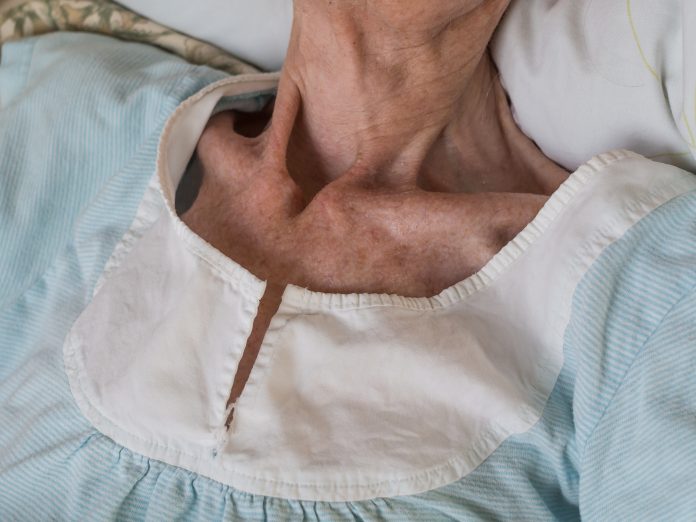
Understanding the cause of muscle wasting associated with cancer, known as cachexia, is a step closer with the discovery of a key protein’s role. The UBR2 enzyme was first identified more than 20 years ago in the muscle tissue of cancer patients. A new paper in Proceedings of the National Academy of Sciences from the University of Texas Health Center at Houston reveals that its action targeting muscle myosin leads to cachexia, a discovery that could provide direction for new therapies that interfere with UBR2 and reduce muscle wasting.
Cancer cachexia is a complication developed in the late stages of cancer in roughly 60% of all cancer patients. Cachexia patients waste away by losing body weight, primarily due to progressive loss of muscle mass, causing respiratory and heart failure. Approximately 30% of all cancer patients die of cachexia, making the complication a major determinant of cancer survival.
Historically, there has been no treatment of cancer cachexia due to poor understanding of its origins. Therefore, a key focus of the UT Houston lab led by Yi-Ping Li, PhD over the past two decades has been to decipher the molecular mechanisms through which cancer causes cachexia.
UBR2 is found in multiple tissues with high expression in skeletal muscle. In 2013, Li’s research team showed that the gene for UBR2 becomes activated by cancer in the skeletal muscle. In mice, they discovered that expression of the gene increased, but the investigators did not know the function of the enzyme at that time. “We just knew that it increased during cancer cachexia, during muscle wasting,” said Li, senior author of that 2013 paper and the current PNAS study, and professor in the Department of Integrative Biology and Pharmacology with McGovern Medical School at UTHealth Houston. “We wanted to know what UBR2 was doing there, to see if we could connect it to a function in muscle.”
The team knew that UBR2 targets E3 ubiquitin-protein ligase. In the current study, the researchers dug deeper into that relationship studying mice with cancer tumors and cachexia. “We knew that Ubiquitin E3 ligases cause protein degradation, which happens during muscle wasting,” said Li. Their studies showed that UBR2 targets key proteins associated with muscle contraction, especially the myosin heavy chain, for degradation. For muscles to function properly, several proteins interact—including myosin and actin—causing the muscle fibers to contract. “In cancer cachexia these proteins lost, specifically the myosin heavy chain is lost,” said Li.
Muscle is classically classified into two types: fast and show. In cancer, fast muscle, or the red muscle tissue, is lost first. “Fast is more important because it generates more force, it is more connected to your function,” Li explains. “That’s why when you lose this this kind of muscle you become very weak.” The paper resolved the key question of what UBR2 targets—myosin heavy chain. And it explains why cancer patients may develop cachexia—loss of muscle fiber, starting with fast muscle.
When the researchers deleted UBR2 in the muscles of mice, the animals were spared from muscle wasting. “Not only is muscle mass not lost but muscle function is preserved too, just with removal of a single protein,” said Li. “That single protein—UBR2—is responsible for the muscle mass loss and the function loss in cancer cachexia.”
Moving to human studies, Li and colleagues found elevated UBR2 in muscle samples collected from consented cancer patients. “This increase is associated with a decrease in myosin heavy chain just like we showed in mice,” said Li. “These data suggest that in humans, UBR2 is important in cancer cachexia—in fact, responsible for it.”
With their new information, Li’s team is studying ways to block UBR2 activation, and hopefully minimize or stop the protein from attacking muscle myosin. They have begun initial studies with candidate UBR2 blockers to see if they interfere with that relationship.













